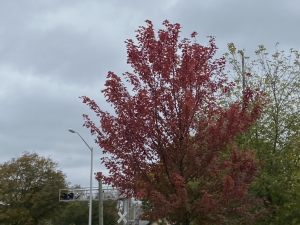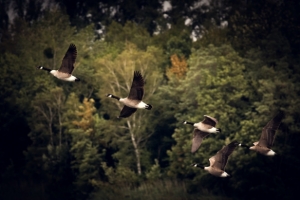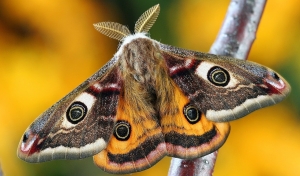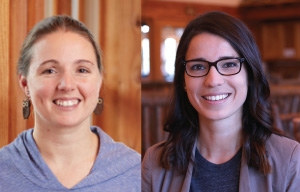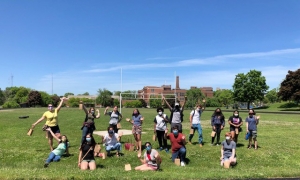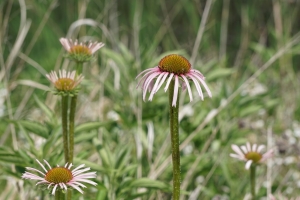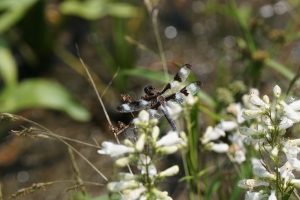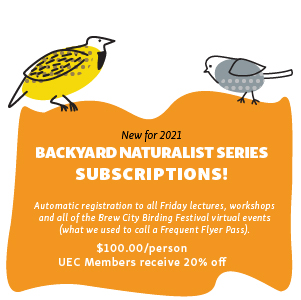

Urban Ecology Center
At the Urban Ecology Center, we connect people in cities to nature and each other. Read more about us here!
Give First this Year
Giving Tuesday typically falls the Tuesday after Black Friday, Small Business Saturday, and Cyber Monday.
But, in this already unusual year, we thought why not flip the script on Giving Tuesday? Why not give first this year?
We're asking you to join us in Giving First on Tuesday, November 24. You can provide the resources needed to continue to offer important Urban Ecology Center programming that inspires generations to build environmental curiosity, understanding, and respect.
www.urbanecologycenter.org/givingfirst

Why are the trees brighter than I remember?
Have you noticed that the leaves have changed into brighter colors then you remember them being in the past? If you haven’t, go take a walk outside and see what you think about the leaf color. The reason that some years the colors of leaves seem brighter than others is because of the temperature and cloud cover. For the leaves to get bright, they need several warm sunny days followed by nights where it does not freeze. If this happens continually then it will be a good year for reds and bright leaves.
Nocturnal Migrators
When we think of fall, we begin to dream of pumpkins, apple orchards, and pumpkin spice lattes. While these are exciting things to look forward to, fall also brings on an exciting event that you can witness from your backyard's comfort. Fall migration in Wisconsin can begin as early as August and will continue through December. The first birds to kick off migration are swallows and purple martins. Birds move to where there are more resources, such as food and nesting locations. Insect availability drops as temperatures cool, and other food sources become scarce as the plant life decays.
Like Moths To A Flame
Moths are known for their beauty and curious attraction to light. These alluring creatures often are overlooked when compared to their close relative, the butterfly. There are a total of 835 species of butterflies in North America. While this number may seem high, it does not compare to the 12,000 total number of moth species in North America alone. Worldwide, there is a whopping total of 160,000 species of moth. For butterflies, there are only 17,500 species worldwide.
Our new Membership Manager and Menomonee Valley Branch Manager
We are so excited to announce that two of our staff have moved into new roles at the Urban Ecology Center. Glenna Holstein is now the Membership Manager, a new position focused on engaging our members, recruiting new members, and enhancing the membership experience at UEC. Angélica Sánchez Mora is now our Menomonee Valley Branch manager.
Interns help the community connect to nature despite COVID-19
As the summer picks up speed, the Urban Ecology Center is bursting with energy and amazing interns. They have come to share their skills, further fulfill their career ambitions, and connect their communities to nature despite the COVID-19 pandemic. This year, the UEC had a total of 17 interns. Five are land steward interns, 11 are summer camp interns, and 1 is a science communication intern. Altogether, the interns helped summer campers reconnect to nature and keep the organization’s mission to help the community.
Yardversity Blitz
"Become a community scientist by exploring the biodiversity in your very own backyard!"
Back in May, the Urban Ecology Center hosted the Backyard Birding Blitz as a way to encourage you to go outside, stay connected to nature and to collectively compile the largest bird species list without the use of fossil fuels all virtually!. This time we are expanding this event to include all biodiversity, called “Yardversity Blitz!” Through the Yardversity Blitz, you will have the chance to become a community scientist through the exploration of the flora and fauna found in your very own backyard! This event will be completely virtual with plant and animal-themed discussions, family-friendly activities, all while you collect data outside. The Yardversity Blitz will end with a nature-themed trivia session. This event will take place on Saturday, July 18th from 8:00 am to 11:00 am CST -- view complete schedule below.
Bingo Sets
How to Train your Dragon-fly: Virtual Event
Summer is a prime time for catching and observing zipping dragonflies! In Wisconsin alone, there are 164 species of dragonfly and damselfly. Each one of these species not only has unique iridescent coloring to their thoraxes and abdomens but distinctive wings that are unique to each dragonfly. Scientists have been surveying dragonflies since the 1800s but their migratory patterns are still not fully understood and it is difficult for scientists to survey entire states without the help of the community. In recent years, the popularity of community science projects has allowed members of the community to participate in collecting data. Participating in dragonfly/damselfly surveying helps scientists study and conserve these mysterious shimmering odonates.
We Miss You -- Coloring Page
WE MISS YOU and look forward to taking you on in-person adventures!
In the meantime, let’s find creative ways to connect! Click here or on the image below for a full-sized coloring page for kids and adults alike! Show your coloring skills and love for connecting to nature by placing your masterpiece in your window. We’d also love to see your creation! Use #UECinmybackyard when you post on social media.
Copyright © 2023 The Urban Ecology Center

